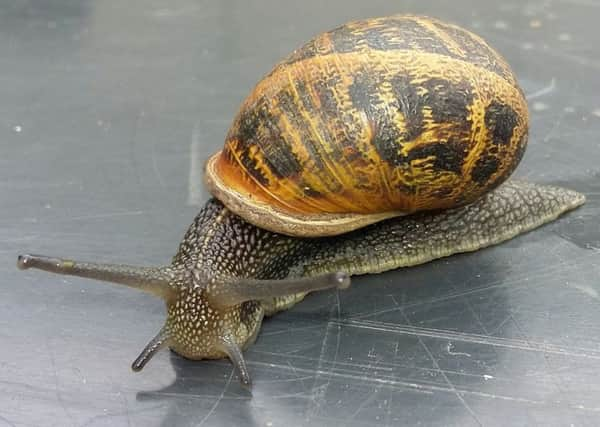Don't just reach for the garden pest poison


Most pernicious are the slugs and snails that operate under cover of darkness. Not content with vegetables, they are currently in the strawberry bed and will run riot in ornamental borders.
I avoid sowing soft-stemmed vegetables directly into the garden. Courgette, lettuce, runner bean and the like are gobbled up at seedling stage. Far better to start them off in pots or cell trays and plant out when they’re well advanced.
Advertisement
Hide AdAdvertisement
Hide AdEven greenhouse crops are affected. Slugs are found under trays of plugs and seedlings, and it’s not unusual to see one on a tomato.
These critters could be eliminated at a stroke if the old mentality of reaching for a poison ruled. Waterproof pellets containing metaldehyde and bran would see them off. However, the resident song-thrush, hedgehog, toads and frogs would all be at risk, and they’re far more precious than a few summer cabbages.
We know a hedgehog is active because there are droppings every morning. A large toad lives in the greenhouse and patrols the border, occasionally burying itself in surface compost and surprising the gardener. Frogs of various sizes emanate from a pond, and a song-thrush has an evening meal as we have ours. The hammering of snail shells can be heard across the garden.
We can’t put these gardening friends at risk when so many effective, non-chemical control options exist.
Advertisement
Hide AdAdvertisement
Hide AdPhysical barriers, such as egg shells, pine bark, sharp grit and sheep’s wool pellets, are popular. I’ve tried each and found the latter most effective. The downside is the cost, given the quantity required. The RHS is using these items, plus serrated copper tape, in an experiment to determine which is most effective. Copper in three forms – rings, tape and paste – gives a shock to slugs on contact.
Biological control of slugs is possible when nematodes are introduced to the soil. These microscopic worms seek out the targets and parasitise them. But it’s not cheap. A pack of Nemaslug costs £22.49 and will treat 100 square metres for six weeks. If you can’t buy it locally, see www.gardening-naturally.com or call 01285 760505.
We tried setting beer pitfall traps years ago for slugs, but it is messy and harmless invertebrates also fall in. The only study I can recall in this field was conducted in the 1980’s and the newspaper report read: “Slugs don’t give a tinker’s cuss for Castlemaine xxxx.”